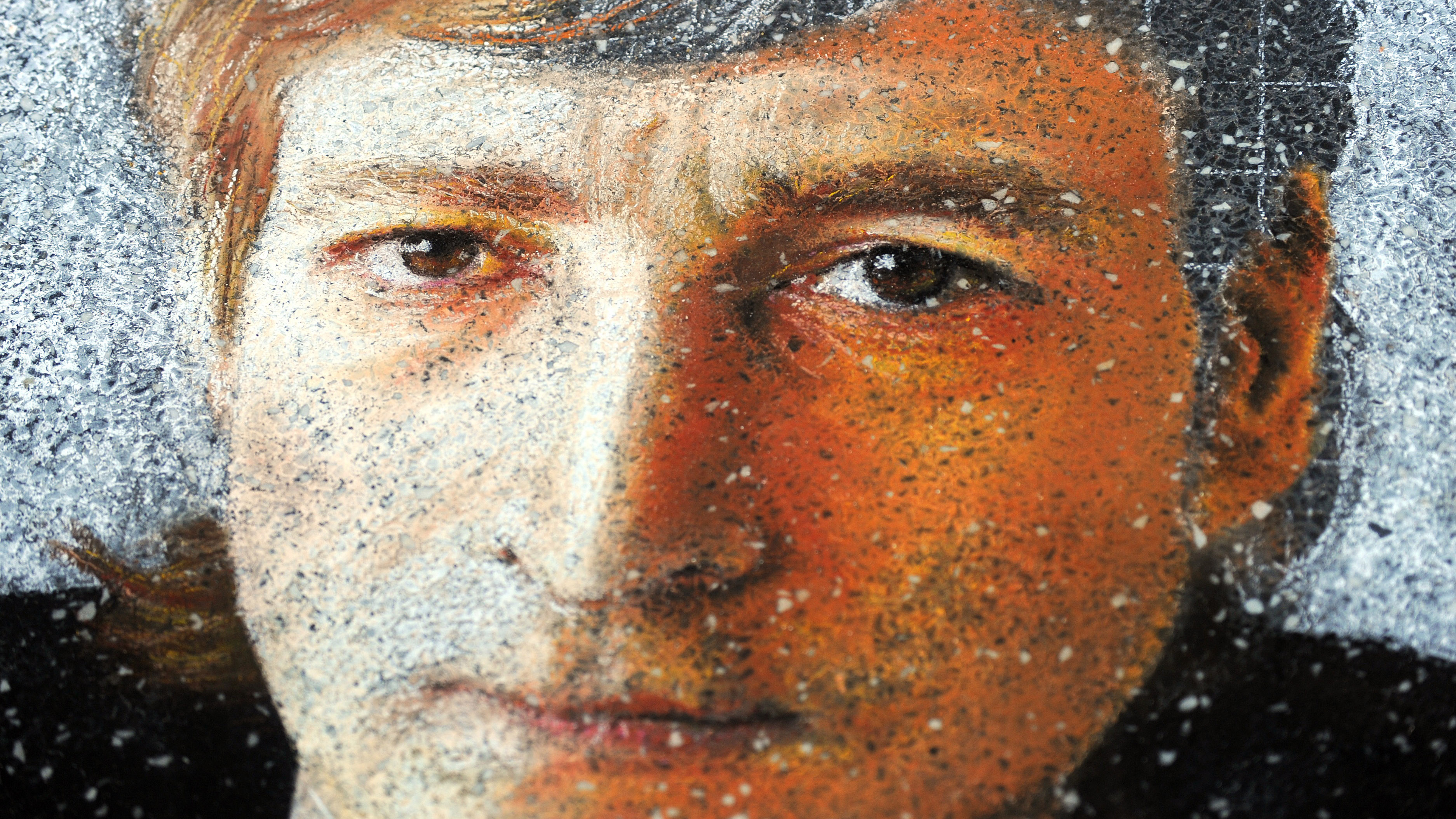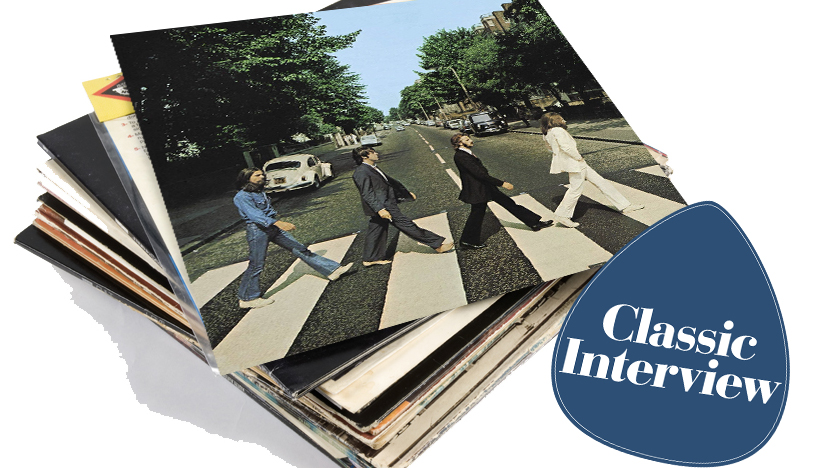
The final ever 'Beatles' song will be released on 2 November, along with a short film. Why the inverted commas? Half the band can't get a say in Now And Then's release, but they all feature on it. Originally an unfinished John Lennon solo demo recorded in the late '70s on piano in his apartment at the Dakota Building in New York City, the poignant love song was given to Paul McCartney as part of two cassettes of home recordings that included the incomplete songs Free As A Bird, Real Love and Grow Old With Me.
The former two would be recorded by the surviving Beatles with Jeff Lynne and released as singles in 1995 and 1996 as part of the Beatles Anthology. Now And Then was also planned to be part of that, so what happened?
The surviving originally Beatles worked on it in 1995
Before Paul McCartney, Ringo Starr and co-producer Jeff Lynne (George Martin had declined due to hearing issues) gathered at McCartney's Hogg Hill Mill in Sussex with Jeff Lynn, the plan was e to work on incidental background music for the Anthology film, but their ambitions shifted.
After Ono had decided to hand over the tapes of Lennon's unfinished songs, the trio decided they wanted to explore the idea of adding instrumentation for possible Beatles treatment. But while they had a whole six demos of Real Love to sift through that were recorded by Lennon in 1979 and 1980, it seems there were only single demos of Free As A Bird and Now And Then on mono cassette. And a lot more work to be done as a result. In the case of Now And Then, it proved a dealbreaker at the time.
On 20 and 21 March the surviving Beatles began work on a backing track for Lennon's demo of the song, but work was halted. "It was one day – one afternoon, really – messing with it," reflected Lynne. "The song had a chorus but is almost totally lacking in verses. We did the backing track, a rough go that we really didn’t finish." There was another obstacle too; George Harrison didn't want to do it and the Beatles were making democratic decisions on the project. All in or none at all.
The Beatle allegedly declared that the song was "f*****g rubbish", according to McCartney in a piece with the New Yorker.
Back in 1995, after several days in the studio working on the track, George felt the technical issues with the demo were insurmountable and concluded that it was not possible to finish the track to a high enough standard
Olivia Harrison
There's every chance he was referring to the sound quality specifically – and the constant hum through Lennon's recording that was allegedly the result of the current in Lennon's Dakota building apartment. A recent statement by Harrison's widow Olivia backs this theory.
Want all the hottest music and gear news, reviews, deals, features and more, direct to your inbox? Sign up here.
“Back in 1995, after several days in the studio working on the track, George felt the technical issues with the demo were insurmountable and concluded that it was not possible to finish the track to a high enough standard,” said Olivia Harrison. “If he were here today, Dhani [Harrison, son] and I know he would have whole-heartedly joined Paul and Ringo in completing the recording of Now And Then.”
But the desire to finish the song wasn't extinguished. Back in 2012 in a BBC Four documentary on Jeff Lynne, McCartney remarked: "That one's still lingering around. So I'm going to nick in with Jeff and do it. Finish it, one of these days."
So what has changed since 1995?
Get Back's AI technology has throw the song a lifeline
When the news surfaced that AI tech was being used to allow a Beatles reworking of Now And Then, alarm bells were sounding off. But rather than the horror of a replicant Lennon adding parts, it's actually a lot simpler.
McCartney witnessed the potential of the technology being used on Peter Jackson's Get Back documentary. Dialogue Editor Emile de la Rey was able to program computers to recognise the individual Beatles' voices from background noises, including their instruments, and effectively clean them up and enhance them for the film. What if the same could be done for Lennon's vocal on the Now And Then demo?
"So when we came to make what will be the last Beatles' record, it was a demo that John had [and] we were able to take John's voice and get it pure through this AI," confirmed McCartney to BBC Radio 4's Today programme. "Then we can mix the record, as you would normally do. So it gives you some sort of leeway."
McCartney got the results he was looking for from AI. “There it was, John’s voice, crystal clear,” he said announcing the impeding release of the reworked Now And Then. “It’s quite emotional. And we all play on it, it’s a genuine Beatles recording. In 2023 to still be working on Beatles music, and about to release a new song the public haven’t heard, I think it’s an exciting thing.”
The Beatles still using cutting-edge technology? Sounds very fitting doesn't it. But the question remains, how will McCartney, Starr and Lynne get around the challenge of Now And Then's structure, which is 'unfinished' – will they add parts? We'll soon find out. But for now you can hear what they had to work with originally…
Hear Lennon's original demo
You can see why the 1978 demo has haunted McCartney; there's undeniable magic here. And though there could have been no foresight, it feels like a goodbye from one of the greatest songwriters of all time. There's so much potential here.
Lennon provides us with a haunting verse, what could be deemed as a bridge and kind of a chorus, that seems more like a placeholder. McCartney has already proved he can still co-write with Lennon despite his passing; Free As A Bird featured a b-section from McCartney that gave it new… wings. A similar approach could work here.
Reportedly, the Beatles' Now And Then features strings overseen by George Martin's son Giles, extra piano and surprisingly, backing vocal parts taken from the band's '60s songs Here, There And Everywhere, Eleanor Rigby and Because. These were added by Martin and then produced alongside McCartney before being mixed by Spike Stent.
We're now tantalisingly close to hearing what that all adds up to, but at the core there's still Lennon's vocal.
“It was the closest we’ll ever come to having him back in the room so it was very emotional for all of us," said Starr. It was like John was there, you know. It’s far out."

Rob is the Reviews Editor for GuitarWorld.com and MusicRadar guitars, so spends most of his waking hours (and beyond) thinking about and trying the latest gear while making sure our reviews team is giving you thorough and honest tests of it. He's worked for guitar mags and sites as a writer and editor for nearly 20 years but still winces at the thought of restringing anything with a Floyd Rose.
